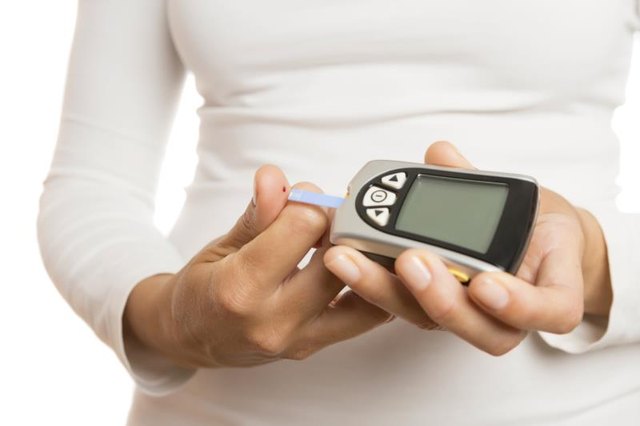Type-2 diabetes accounts for 90 percent to 95 percent of diabetes cases in the United States, according to the Centers for Disease Control and Prevention. The disorder tends to develop in older people and those who are obese, physically inactive or have a family history of the disorder. The CDC says it can be prevented or its symptoms improved by consuming a healthy diet that includes the right types of fruits and fruit products.

Monitoring blood sugar is important in type-2 diabetes. Photo Credit Click_and_Photo/iStock/Getty Images

Whole Fruits
Although all fruits are generally healthy and good sources of nutrients, vitamins and minerals, some kinds are especially beneficial for a person who already has or is hoping to avoid type-2 diabetes. These include whole fruits that are high in fiber, which can slow the rise in blood sugar after a meal. Most fruits also contain natural antioxidants, compounds that protect your body from the potentially damaging effects of free radicals. Free radicals form in your skin when you're in sunlight, in your organs as part of the digestive process or when you're exposed to toxins, such as cigarette smoke. Over time, free radicals can raise your risk of chronic diseases that include type-2 diabetes.
The Research
A study published in the August 2013 issue of the "British Medical Journal" provided detailed information about making fruit choices that could lower your risk of type-2 diabetes. The study included more than 185,000 people who took part over a 24-year period. Healthy at the start, 6.5 percent of the subjects developed type-2 diabetes over the course of the study. Those who consumed at least two servings per week of whole fruits -- especially blueberries, grapes, bananas, grapefruit and apples -- had a risk of diabetes that was up to 23 percent lower than those subjects who consumed less than a single fruit serving each month. Although the researchers didn't identify the specific fruit components responsible for this effect, they suggest that the best course is to include a variety of whole, fiber-rich fruits in your daily diet.
The Right Amount
If you consume 1,200 to 1,600 calories daily, the National Diabetes Information Clearinghouse recommends that you have two servings of fruit daily and three servings if you take in 1,600 to 2,000 calories. Examples of a single serving include 1 small apple, 1 cup of berries or half a grapefruit, while one medium banana is equivalent to two servings. Limit your consumption of dried fruits, which are healthy but contain more calories and sugar than fresh, whole fruits. You can include canned fruits, but opt for those packed in their own juice or water, and avoid any with sugar added. You can also use 1/2 cup of fruit juice as a serving, but drink it only occasionally because it's naturally high in sugar.
The Bottom Line
If you have type-2 diabetes, see your doctor or a registered dietitian for help in designing a healthy diet that's rich in the best whole-fruit choices. If you don't have the disorder and are concerned about avoiding it, it's best to eat a balanced diet that contains a variety of foods, with whole, high-fiber fruits included in one or more meals each day.
www.livestrong.com





No comments:
Post a Comment